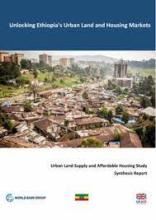Land Library
Bienvenue dans la bibliothèque du Land Portal. Explorez notre vaste collection de ressources en libre accès (plus de 74 000), comprenant des rapports, des articles scientifiques, des articles de recherche, des publications évaluées par des pairs, des documents juridiques, des vidéos et bien plus encore.
/ library resources
Showing items 1 through 9 of 1013.Ethiopia’s rapidly growing urban centers are facing an unprecedented level of demand for urban land
and housing. How can Ethiopia supply urban land in an efficient and equitable fashion to accommodate
The dynamics of urbanization and growth of the Latin American city is due to different geographical, economic, and social factors.
Desde el reconocimiento de la existencia del desplazamiento forzado, el Estado ha ampliado y fortalecido la protección para los derechos de las víctimas. No obstante, las vulnerabilidades asociadas a la situación de desplazamiento se han agudizado.
Sustainable development goals (SDGs)
placed access to basic services at the center of
international development in 2016-2030. Out of 17 goals,
five address the access of poor people to basic services: to
This program document presents the World
Bank Group (WBG) FY17-22 Country Partnership Framework (CPF)
for Bulgaria. The timing of the new CPF follows the
preparation of theSystematic Country Diagnostic (SCD)
Convenient access to safe water is
central to human health and development. Water-borne disease
remains a major cause of mortality and morbidity in the
world, much of which could be eliminated by a combination of
This paper assesses the relation between
access to markets and cultivated land in Sub-Saharan Africa.
Making use of a geo-referenced panel over three decades
(1970-2005) during which the road network was significantly
The Country Partnership Framework (CPF)
for Montene gro covers the period from July 1, 2015 to June
30, 2020 (fiscal years 2016-2020). This CPF builds on the
results and lessons of the previous World Bank Group (WBG)
This report looks at the growth poles
policy in Romania to determine ways to increase its
effectiveness and efficiency for the next programming cycle
(2014-2020). The growth poles policy in Romania has been



